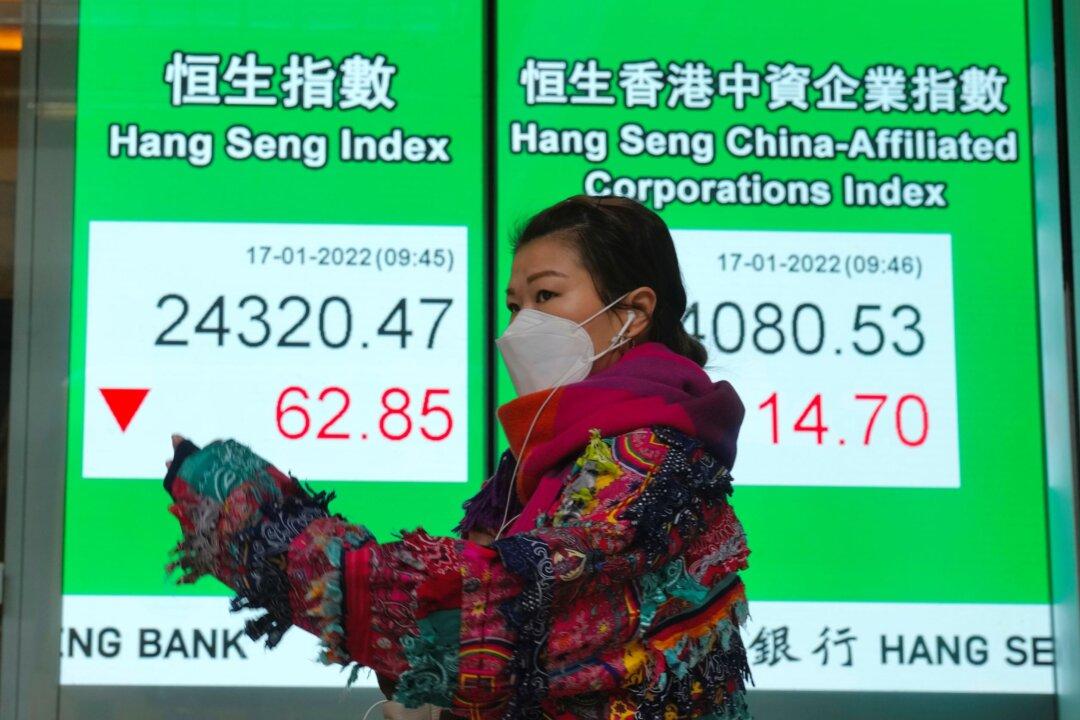SYDNEY—Share markets were choppy on Monday as a slew of Chinese economic data confirmed the deadening effect of coronavirus restrictions on consumer spending, prompting Beijing to again ease monetary policy.
A holiday in the United States made for thin trading, but that did not stop Treasury futures from sliding further and Brent crude hitting a three-year top of $86.71 a barrel.





